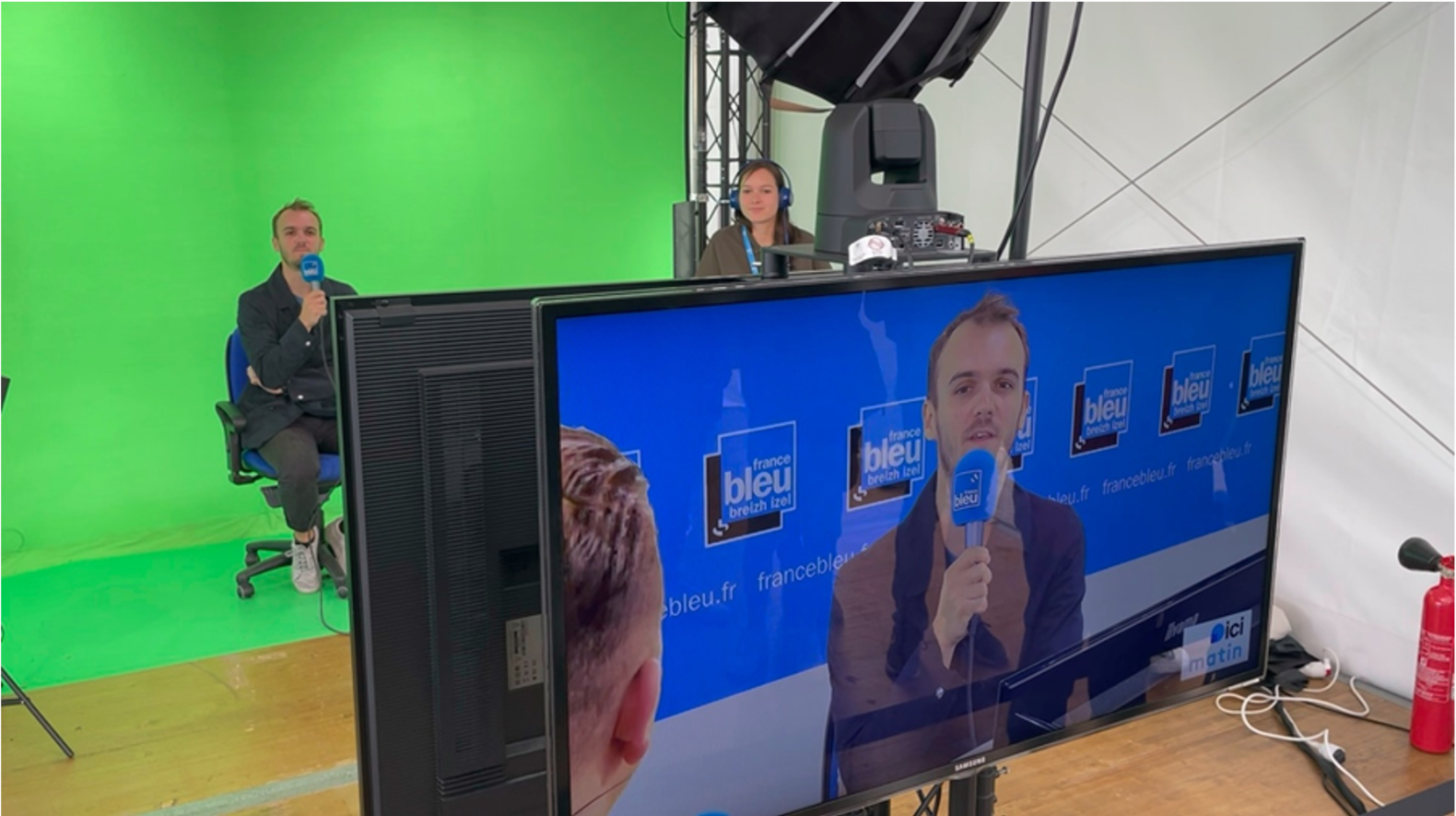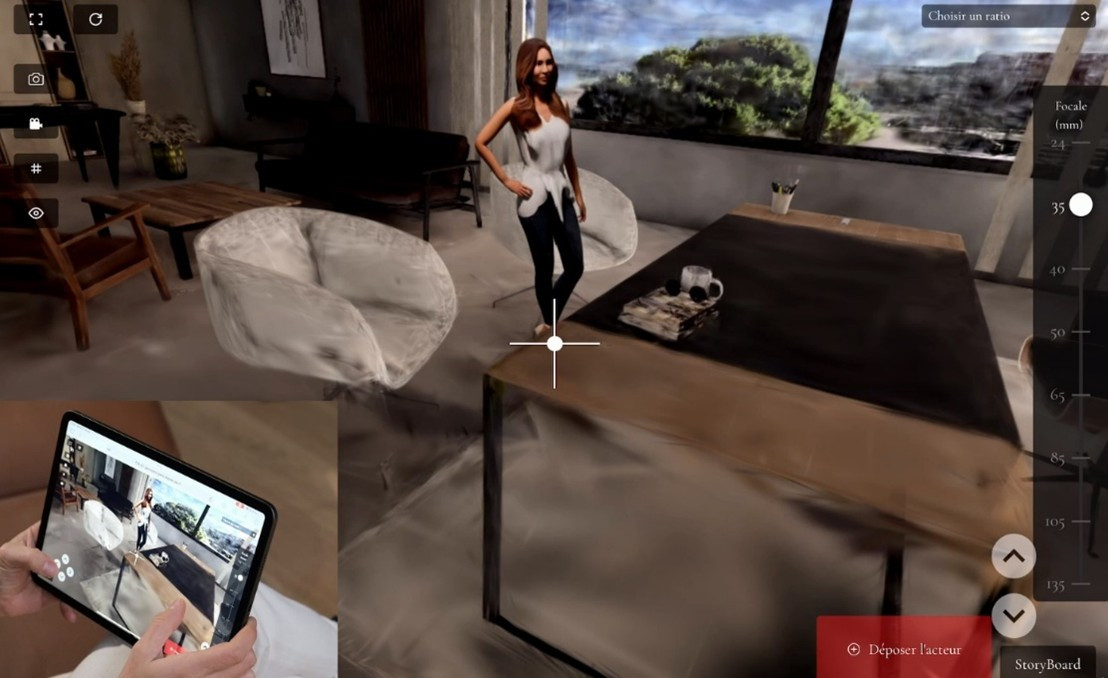AR on sets, a demanding technology
Augmented reality has become a common tool on major television sets. On set or in specific explanatory sequences, computer-generated objects, often in 3D, are integrated live to the real set for an efficient and attractive, artistic and editorial presentation. France Télévisions was a forerunner in this field and continues to offer new innovative formats that take full advantage of these image technologies.
But these formats require highly technical equipment and a highly protected environment, so that the use of augmented reality does not suffer from the slightest technical or editorial hazard, which would immediately jeopardize the credibility of the sequences and the legitimacy of using this technology. The lighting conditions, the conformation of the terrain and set, the transport and installation of high-precision equipment, not to mention their own cost ... the constraints of implementing augmented reality outside the studios are numerous. This is why outdoor experiments are extremely perilous, therefore expensive, and therefore rare, if not non-existent.
Video demonstration of France tv technology
On the field just like a studio
France Télévisions had carried out one of the very first outdoor augmented reality experiments on Utah Beach for the 70th anniversary of the D-Day landings.

Since then, the multiple editorial projects have encountered the constraints mentioned above. Today, the MediaLab de l'Information wanted to propose an alternative solution by setting a simple frame of reference:
=> To create an extremely mobile augmented reality device, usable at a very low cost, with a maximum simplicity of deployment and use, with a quality and functionalities equivalent to the technologies currently used in the studio, and even new capacities if possible.
The system, developed entirely within the company, is based on mass-market hardware that is accessible to all at increasingly lower prices. The system uses HTC's Vive virtual reality kit. Through its infrared sensors, the device analyzes in space the precise position of the camera and its angle of view thanks to a tracker attached to its top. The information is coordinated with the virtual reality helmet which applies exactly the same movements on the virtual object.
The computer interface can then bring live together the real image and the computer-generated image, in the same clearly identified space, for an augmented reality sequence in high definition. It is this device that was implemented during the 14th of July special broadcast, where Nicolas Châteauneuf, a journalist specializing in live virtual images, was able to carry out his explanatory sequences as if he were in his usual ultra-equipped studio.
The device

A " Made In France tv " technology
A few months ago, at the root of our thinking, we had the intuition that the augmented reality devices already on the market could offer the basis (with an ultra rapid progress) of a technological broadcasting format. When Microsoft presented us with its "spectator view" system, which allows us to film the synthetic objects generated by the Hololens glasses, we felt that the much hoped-for technology was now within reach, and we launched a test project.
We were very enthusiastic about the result, despite a few limitations, notably the complexity of filming in motion and the constraints of implementation. So we continued our own reflection. In particular Jean-Paul Chevreux, the engineer in charge of the project within the Digital Innovation Department. He cleverly adapted the logic of the first tests to the HTC Vive virtual reality kit and developed his own unique and exclusive technology, naturally and affectionately named "JP Tech" in his honor.

A fuller experience
Jean-Paul's creations have led to several major advances: firstly, they have made mobile the real-life camera, with all the complex image control systems that this implies. But also, an unprecedented functionality, to make computer-generated objects interactive. In addition to an already very ambitious and successful first use during the July 14 broadcast, the developed solution also makes it possible to act directly on the size and orientation of virtual objects, to point with a laser in space to precise details of digital objects... while waiting for other surprises that will soon appear on our antennas.
So today, the MediaLab of Information and Digital Innovation is particularly proud to offer France Télévisions audiences this new technology born of our intuition and our internal creative resources. The enthusiastic reception given to this innovation reinforces France Télévisions' desire to bring a richer experience to a growing number of programs, an increased capacity for decoding and analysis, for ever more innovative, relevant and useful information.
The "back-office"

To go further
Innovation France tv on the 14th of July: 2018 edition
 Back
Back
 News
News











